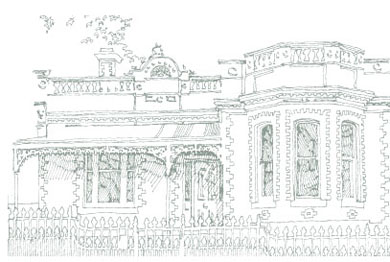
OUTSIDE: > Italianate elements such as rendered walls, tall parapets, arches and moulded ornaments > multi coloured and tuck-pointed brickwork > timber houses generally have square-edged weatherboards, sometimes with incised weatherboards simulating blocks of stonework > dense and even spread of ornamentation, including intricate iron lacework and complex tiled patterns on verandah floors and entry pathways > increasing use of triple windows and blue and red coloured glass beside entry doors > doorways and windows sometimes arched |
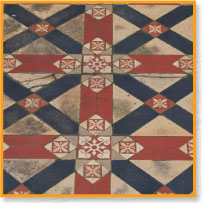
|
GARDEN: > for masonry buildings, fences commonly palisade-style with cast iron spears on stone plinths and ornamented end piers of stone, rendered or face brickwork, or cast iron > similar to Mid Victorian with bold and strap foliaged plants such as Yuccas, Aloes, Canna, Alocasia, Wigandia, Croton, Cordyline, Draceana, Musa, bamboos & ferns
|
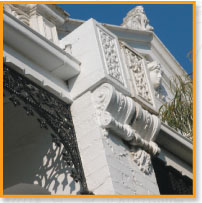
|
INSIDE: > lavish internal ornamentation > more varied, complex and stronger colour schemes > elaborate wallpapers > complexity of ornament and colour diminishes from front to back of house
|
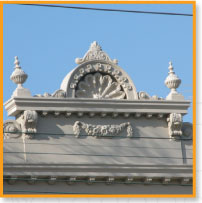
|
COLOUR & DESIGN NOTES: > where visible, slates on roofs sometimes laid in patterns using subtle colour changes > external walls red or brown brick, with white or cream bricks at corners; rendered walls usually left natural grey or lime-washed in a colour > trims similar to earlier Victorian styles, but colours stronger and more vivid
|
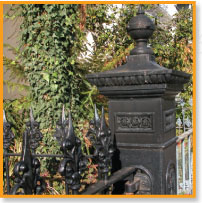
|
EXTERIOR COLOURS: |
||||
Salmon Pink |
Light Cream |
Light Stone |
Biscuit |
|
DETAIL COLOURS: |
||||
Brown |
Deep Brunswick |
Deep Indian Red |
Light Straw |
|
HISTORY: > the name "Marvellous Melbourne" reflects the city’s great prosperity > mansions are constructed for the wealthy by prominent architects > extravagantly decorated houses reflect the optimism of the ‘boom’ period > international exhibitions held to showcase locally and internationally manufactured products > between 1890 and 1895 Melbourne's building and architecture is impacted by the Depression |
